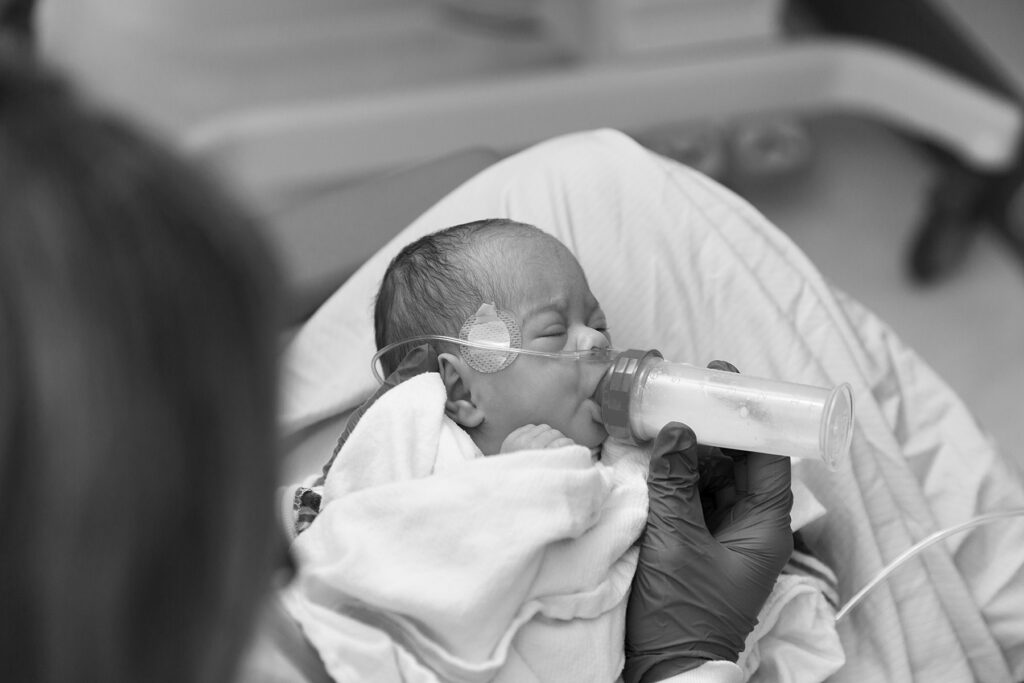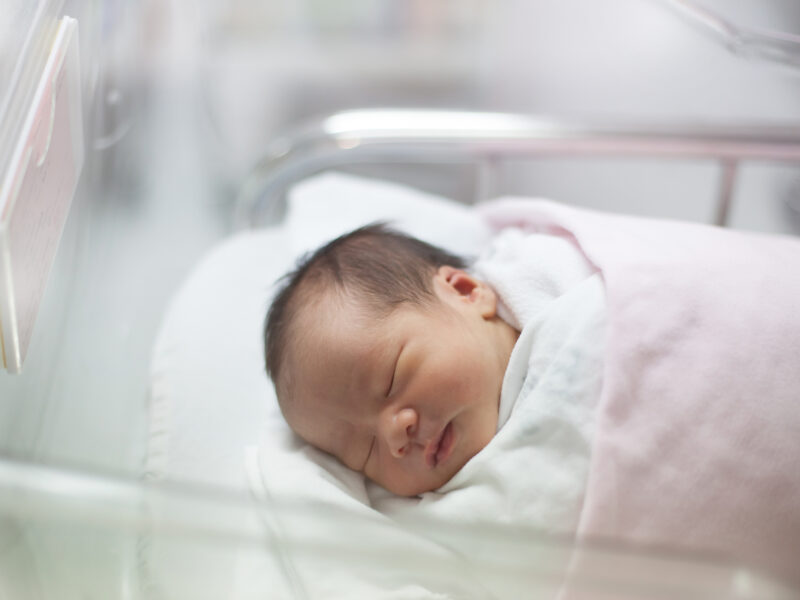Development of Acute Kidney Injury as a Potential Biomarker of Necrotizing Enterocolitis in Preterm Infants
Development of Acute Kidney Injury as a Potential Biomarker of Necrotizing Enterocolitis in Preterm Infants https://pediatricsnationwide.org/wp-content/uploads/2022/07/InPractice_Brief_Quality-Improvement-Scorecard-Enhances-Safety-for-Newborns-1024x683.jpg 1024 683 Mary Bates, PhD Mary Bates, PhD https://secure.gravatar.com/avatar/c6233ca2b7754ab7c4c820e14eb518c8?s=96&d=mm&r=g- November 02, 2022
- Mary Bates, PhD

Regular measurement of serum creatinine levels could help identify necrotizing enterocolitis sooner.
Researchers at Nationwide Children’s neonatal intensive care unit (NICU) evaluated serum creatinine levels and the development of acute kidney injury as a potential biomarker of necrotizing enterocolitis in preterm infants. The retrospective chart review showed that acute kidney injury is more prevalent in infants with necrotizing enterocolitis (NEC) but there was not enough data to establish a temporal relationship between the two diseases.
NEC is the most common gastrointestinal disease in preterm infants, though there is no biomarker for it. It is believed that NEC results from hypoperfusion of the bowel, which can be caused by factors including infection or hypotension.
Changes in hemodynamics associated with infection or hypotension may also contribute to another common disease in preterm infants, acute kidney injury (AKI). AKI is usually diagnosed based on elevated serum creatinine levels, indicative of kidney hypoperfusion.
“Since NEC results from hypoperfusion of the gut and AKI results from hypoperfusion of the kidney, we thought that if serum creatinine is a biomarker of AKI, it could potentially be a marker for developing NEC in some babies,” says Tahagod Mohamed, MD, a pediatric nephrologist at Nationwide Children’s and the study’s senior author.
For the study, led by Nationwide Children’s Fellow Rachel Han, MD, now a neonatologist at Riley Children’s Hospital, researchers reviewed the charts of preterm infants with and without NEC admitted to Nationwide Children’s NICU between 2012 and 2020.
They found that infants who developed NEC had lower gestational age at birth, lower birthweight and more AKI risk factors (such as sepsis and exposure to nephrotoxic medications) than infants without NEC. In addition, serum creatinine levels were checked more frequently in infants with NEC, due to the overall increased monitoring and lab tests done on these babies.
“We found that the rate of AKI in babies with NEC was high, about 20%,” says Dr. Mohamed. “And in the control cohort of infants without NEC, the rate of AKI was zero.
“This tells us that babies with NEC are at risk for AKI.”
However, there was not enough serum creatinine level data, especially in the infants without NEC, to make any inferences about the temporal relationship between AKI and NEC.
Dr. Mohamed, who is also an assistant professor of pediatrics at The Ohio State University College of Medicine, says that more regular serum creatinine checks are needed in preterm infants since they are at risk of developing both AKI and NEC.
“We conclude that there is an association between NEC and AKI,” she says. “We also conclude that in any NICU, regular serum creatinine monitoring is warranted, especially in these sick, preterm babies.”
According to Dr. Mohamed, there are other, recently developed biomarkers of AKI that could be used instead of serum creatinine, as well. For example, NGAL is a promising marker for hypoperfusion found in the urine. Monitoring either creatinine in the blood or NGAL in the urine could potentially tell clinicians about hemodynamics in the kidney and the gut and help them diagnosis AKI and NEC in a timely manner in preterm infants.
Reference:
Han R, Bonachea EM, Jackson K, Conroy S, Slaughter JL, Mahan JD, Mohamed T. Describing patterns in serum creatinine in infants with and without necrotizing enterocolitis. Journal of Perinatology. 2022. Doi: 10.1038/s41372-022-01482-7.
Image credit: Nationwide Children’s
About the author
Mary a freelance science writer and blogger based in Boston. Her favorite topics include biology, psychology, neuroscience, ecology, and animal behavior. She has a BA in Biology-Psychology with a minor in English from Skidmore College in Saratoga Springs, NY, and a PhD from Brown University, where she researched bat echolocation and bullfrog chorusing.
-
Mary Bates, PhDhttps://pediatricsnationwide.org/author/mary-bates-phd/December 27, 2016
-
Mary Bates, PhDhttps://pediatricsnationwide.org/author/mary-bates-phd/
-
Mary Bates, PhDhttps://pediatricsnationwide.org/author/mary-bates-phd/
-
Mary Bates, PhDhttps://pediatricsnationwide.org/author/mary-bates-phd/






